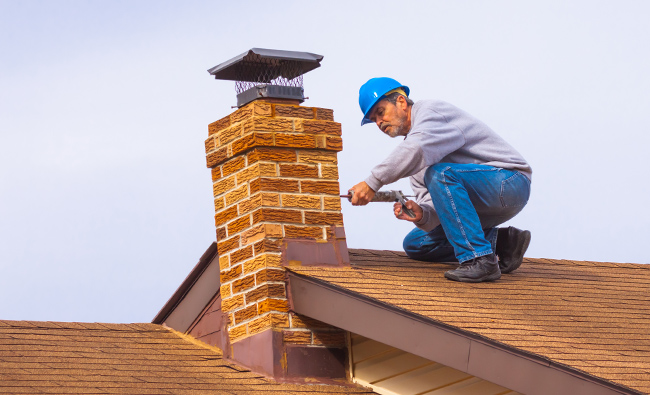
Understanding why chimneys develop leaks, recognizing the early signs, and knowing when to take action can save you a significant amount of money and protect your home’s integrity. Whether you’re dealing with an active leak or want to prevent future problems, this roofersthevillagesfl.com comprehensive guide will walk you through everything you need to know about chimney leaking issues.
From identifying root causes to applying both immediate fixes and long-term prevention strategies, you’ll gain practical insights to protect your chimney—and your home—through winter and beyond.
What Causes Chimney Leaks
Understanding the root causes of chimney leaks is essential for effective prevention and repair. In most cases, leaks result from compromised protective barriers that normally prevent water from entering the chimney structure.
Missing or Damaged Chimney Cap
The chimney cap serves as your first line of defense against water infiltration. When this protective cover is missing, damaged, or improperly installed, rain and snow can fall directly into the flue system, potentially causing damage. This direct water entry represents one of the most straightforward causes of chimney leaking problems.
A quality stainless steel cap not only prevents precipitation from entering but also keeps out animals and debris that could create blockages. When caps become loose, cracked, or completely absent, your chimney becomes vulnerable to immediate water damage.
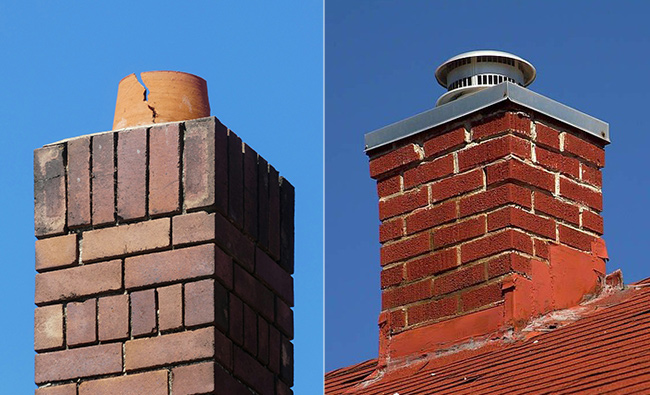
Cracked Chimney Crown
The chimney crown, a concrete structure that caps the top of your chimney around the flue liner, plays a crucial role in protecting against water. When this crown develops cracks due to weathering, thermal expansion, or poor initial construction, it creates direct pathways for water to seep into the chimney structure.
Even hairline cracks can allow significant moisture penetration over time. When water freezes within these cracks during winter months, the expansion widens the openings, creating a cycle of increasing damage that compromises the entire crown’s effectiveness.
Deteriorated Flashing
Flashing consists of metal sheets that seal the critical junction where your chimney meets the roof. This waterproof barrier prevents water from entering the gap between these two structures. When flashing becomes damaged, rusted, or improperly sealed, water can infiltrate both the chimney and the surrounding roof areas.
Signs of flashing problems include red or brown stains at the top of the chimney, indicating metal deterioration. The complex geometry where the chimney structure meets various roof angles makes proper flashing installation challenging, and even small gaps can lead to significant water damage.
Porous Bricks and Mortar
Masonry materials like brick and mortar are naturally porous, meaning they can absorb moisture over time. When these materials haven’t been properly sealed or have deteriorated, they allow water to penetrate the chimney walls. This absorption creates a visible phenomenon called efflorescence – white, powdery deposits that appear when water passes through masonry and evaporates, leaving behind mineral salts.
The freeze-thaw cycle particularly damages porous masonry. As absorbed water freezes, it expands, creating new cracks and widening existing ones. This process gradually compromises the structural integrity of the entire chimney.
Condensation Issues
Chimneys that lack proper liner systems or have damaged liners can experience significant condensation problems. When warm exhaust gases meet cooler surfaces within the chimney, water vapor condenses and accumulates on these surfaces. This internal moisture can damage the chimney from the inside out, leading to deterioration that eventually manifests as visible leaks.
Unlined chimneys are particularly susceptible to this issue, as the temperature differential between hot flue gases and cold masonry creates ideal conditions for condensation formation.
Warning Signs of a Leaking Chimney
Early detection of chimney leaks can prevent extensive damage and costly repairs. Recognizing these warning signs allows you to address problems before they escalate into major structural issues.
Water Stains on Interior Surfaces
One of the most obvious indicators of a leaky chimney is water staining on walls or ceilings near the chimney structure. These stains typically appear as discolored patches with a brownish or yellowish tint. Importantly, these stains might not appear directly adjacent to the chimney, as water can travel through your home’s structure before becoming visible.
The presence of water stains indicates that moisture has already penetrated your home’s interior, suggesting an established leak that requires immediate attention.
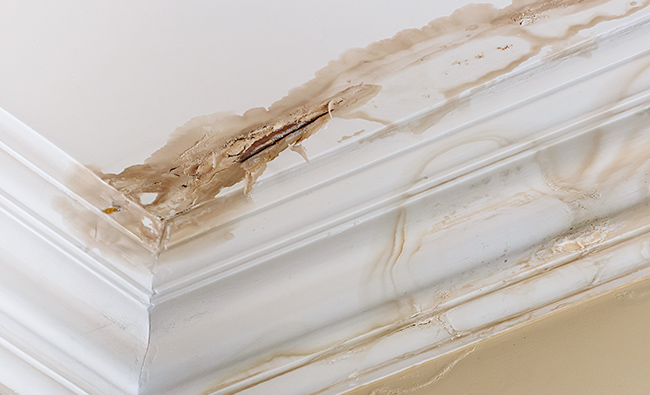
White Staining on Exterior Bricks
Efflorescence appears as white, chalky deposits on chimney bricks and serves as clear evidence of water penetration through the masonry. This occurs when water dissolves mineral salts within the brick and mortar, carrying them to the surface, where they remain after the water evaporates.
The appearance of these white stains indicates that your masonry is actively absorbing and releasing moisture, signaling compromised water resistance that needs addressing.
Musty Odors from the Fireplace
A distinctive musty smell emanating from your fireplace often indicates water infiltration in the chimney system. This odor, which resembles dirty laundry or mildew, typically suggests water accumulation in hidden areas such as the smoke shelf or behind the firebox.
The smell intensifies when mold or mildew begins to grow in a damp environment, creating potential health concerns in addition to structural problems.
Rust on Metal Components
Metal elements within your fireplace system, including the damper, firebox, and any exposed flashing, may develop rust when repeatedly exposed to moisture. This rust formation not only indicates an active leak but also compromises the functionality and safety of these critical components.
Rust damage to the damper can prevent proper sealing, while corroded flashing loses its ability to redirect water away from vulnerable areas.
Sounds of Water Movement
Audible dripping within the chimney or fireplace provides direct evidence of active water infiltration. These sounds may be intermittent and most noticeable during or immediately after rainfall. The presence of actual water in the firebox represents an advanced stage of leaking that requires immediate professional intervention.
Damaged Interior Finishes
Moisture from chimney leaks can cause wallpaper to peel or bubble and paint to blister or flake in areas surrounding the chimney. These cosmetic damages often appear before structural damage becomes evident, serving as early warning signs that shouldn’t be ignored.
When these finishes fail repeatedly despite repairs, it typically indicates an ongoing moisture problem that needs to be addressed at its source.
Immediate Solutions for Chimney Leaks
When you discover signs of chimney leaking, taking immediate action can prevent further damage while you plan for comprehensive repairs.
Install a Protective Chimney Cap
For chimneys lacking proper coverage, installing a quality stainless steel chimney cap provides immediate protection against direct water entry. These caps prevent rain from falling directly into the flue while also keeping out animals and debris that might contribute to blockages.
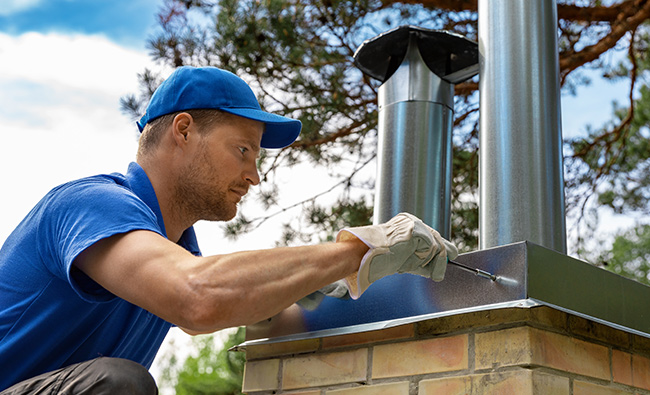
Choose caps with mesh sides that allow proper ventilation while blocking water entry from any angle. Proper installation ensures the cap remains secure during high winds and severe weather.
Apply Crown Sealer to Minor Cracks
Small cracks in the chimney crown can be addressed with specialized crown sealers designed for masonry applications. These elastomeric sealants expand and contract in response to temperature changes while maintaining their waterproof properties.
Clean the crown surface thoroughly before application, removing any loose debris or deteriorated material. Apply the sealer according to the manufacturer’s specifications, ensuring complete coverage of all visible cracks.
Address Flashing Issues
Minor flashing problems may be temporarily addressed with high-quality roofing cement or specialized flashing sealants. However, extensive flashing damage typically requires professional replacement with modern waterproof materials that accommodate the different expansion rates of chimney and roof structures.
Seal Masonry Cracks
Small cracks in bricks and mortar joints can be sealed with appropriate masonry sealants. It’s crucial to use breathable sealants specifically designed for masonry applications, as these allow the brick to release moisture vapor while preventing liquid water from entering.
Clean cracks thoroughly before sealing, removing any loose mortar or debris that could prevent proper adhesion.
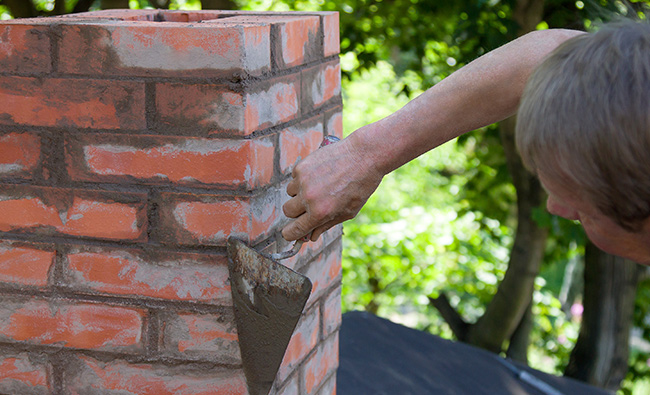
Professional Repair Options
Complex chimney leak problems require professional intervention to ensure lasting solutions and structural integrity.
Complete Crown Reconstruction – When a chimney crown has deteriorated to the point where it is no longer effective for sealing, professional reconstruction becomes necessary. Skilled masons construct properly sloped crowns with overhangs and drip edges that direct water away from the chimney structure.
Professional crown work involves proper reinforcement and the use of weather-resistant materials designed to withstand decades of exposure without failure.
Comprehensive Flashing Replacement – Professional flashing replacement incorporates advanced sealing systems that provide superior water protection. Modern flashing installations often include step flashing, counter flashing, and high-quality sealants that create multiple barriers against water infiltration.
Masonry Restoration – Extensive brick and mortar damage requires professional repointing – the process of removing deteriorated mortar and replacing it with fresh material matched to the original composition. This restoration work rebuilds the structural integrity and water resistance of the entire chimney.
Waterproofing Applications – Professional masonry waterproofing involves applying specialized breathable sealers that penetrate the masonry surface and chemically bond to create a hydrophobic barrier. These treatments prevent water infiltration while allowing trapped moisture to escape.
Consequences of Ignoring Chimney Leaks
Failing to address chimney leaks promptly can result in severe and expensive consequences that extend far beyond the immediate leak location.
Progressive Structural Damage
Ongoing water infiltration gradually deteriorates chimney bricks and mortar joints, potentially leading to structural instability. The freeze-thaw cycle accelerates this damage as water trapped in masonry expands when frozen, creating new cracks and widening existing ones.
In extreme cases, this progressive deterioration can lead to partial or complete chimney collapse, requiring extensive reconstruction that costs significantly more than preventive maintenance.
Wood Rot and Framing Damage
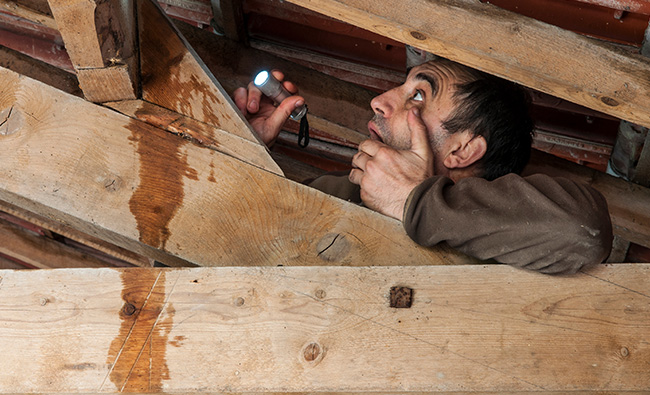
Water entering through the chimney can migrate to wooden structural elements, including roof decking, attic framing, and wall studs. This moisture causes wood rot, compromising the structural integrity and potentially requiring extensive carpentry repairs.
The damage often extends well beyond the visible chimney area, as water follows the path of least resistance through your home’s structure.
Mold and Indoor Air Quality Issues
The damp environment created by chimney leaks provides ideal conditions for the growth of mold and mildew throughout affected areas. These biological contaminants create health risks for occupants, particularly those with respiratory sensitivities or compromised immune systems.
Professional mold remediation can significantly increase the cost of repair projects and may require temporary relocation during treatment.
Energy Efficiency Loss
Water damage to insulation in attics and walls surrounding the chimney compromises your home’s thermal envelope, allowing heat to escape. Wet insulation loses its effectiveness, leading to increased energy consumption for heating and cooling.
This energy loss represents an ongoing cost that continues until proper repairs restore the insulation’s performance.
Property Value Impact
Unresolved water damage affects your home’s market value and complicates property sales. These issues typically surface during home inspections, potentially derailing transactions or requiring significant price reductions.
The cost of addressing water damage during a sale often exceeds what preventive maintenance would have required.
Professional Chimney Leak Detection
Accurate leak detection requires professional expertise and specialized tools to identify all sources of water infiltration.
Annual CSIA-Certified Inspections
The Chimney Safety Institute of America recommends annual chimney inspections by certified professionals who can identify early signs of water infiltration before visible damage occurs. These inspections should ideally take place before winter, when chimney use increases and weather conditions become more challenging.
Certified inspectors have the training and experience to recognize subtle signs of water damage that homeowners might miss.
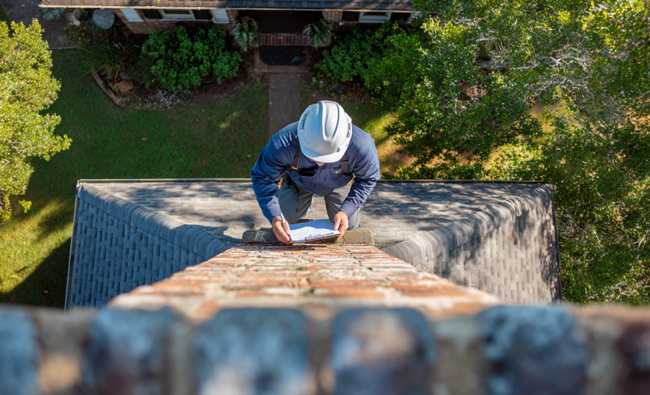
Specialized Testing Methods
Professional chimney services employ various testing methods to pinpoint leak sources:
Masonry Absorption Test (MAT): This test measures how much water the masonry absorbs, helping determine if waterproofing treatments are necessary and effective.
Video Scanning Technology: Specialized cameras inspect the internal flue for damage, including cracks and deterioration that may not be visible from an exterior inspection alone.
Controlled Water Testing: When leak sources aren’t immediately apparent, professionals conduct systematic water tests to pinpoint exact infiltration points.
Comprehensive Evaluation
A thorough professional assessment examines all potential leak sources, including the cap, crown, flashing, and masonry. This holistic approach ensures that all vulnerabilities are identified rather than just the most obvious ones.
Professional evaluation also includes assessment of the overall chimney structure and recommendations for preventive maintenance.
Preventing Future Chimney Leaks
Proactive maintenance represents the most cost-effective approach to chimney leak prevention, helping you avoid costly repairs while ensuring your chimney’s longevity.
Establish a Regular Maintenance Schedule
Schedule annual inspections before winter when chimney use increases and weather conditions become more severe. These inspections allow for early detection and remediation of potential leak sources before they cause significant damage.
Professional maintenance includes cleaning, minor repairs, and assessment of all water-protective elements.
Apply Preventive Treatments
Every 5-7 years, apply appropriate water-repellent treatments to masonry chimneys. These treatments must be vapor-permeable to allow the masonry to release trapped moisture while preventing liquid water from entering.
Professional application ensures proper coverage and material selection for your specific chimney type.
Maintain Surrounding Systems

Keep gutters and downspouts functioning properly to prevent water overflow near the chimney structure. Clogged gutters can cause water to back up and contact the chimney in areas not designed for water exposure.
Trim tree branches away from the chimney to prevent physical damage and reduce moisture retention caused by excessive shade.
Address Issues Promptly
Immediately attend to small cracks and minor damage before freeze-thaw cycles cause expansion. What begins as an inexpensive repair can quickly develop into major structural damage if water penetration is not addressed promptly.
Seasonal Maintenance Strategies
Spring: Inspect for winter damage from freeze-thaw cycles and ice formation. Schedule necessary repairs while weather conditions favor masonry work.
Summer: Apply waterproofing treatments and complete major repairs. Dry conditions provide optimal circumstances for sealant application and masonry work.
Fall: Clean the chimney and ensure all protective elements are properly installed before winter. This preparation prevents water entry during wet months when the chimney is in active use.
Winter: Monitor for ice dam formation and watch for interior signs of leaks. Address any emergency issues promptly to prevent extensive damage.
When to Call a Professional
Certain situations require immediate professional intervention to ensure safety and prevent extensive damage.
Immediate Professional Response Needed
Contact a certified technician immediately when you notice:
- Water stains appearing on interior walls or ceilings
- Visible cracks in the chimney crown or brick structure
- Signs of flashing separation or deterioration
- Persistent musty odors despite cleaning efforts
- Previous DIY repairs that have failed to solve the problem
Complex Leak Situations
Multiple leak sources or recurring problems after repairs indicate complex issues that require a comprehensive professional assessment. These situations often involve multiple compromised systems that need coordinated repair approaches.
Safety Considerations
When leak damage has progressed to affect structural elements or create mold growth, professional intervention becomes a safety necessity. Attempting DIY repairs on compromised structures can be dangerous and may worsen existing problems.
Professional contractors have the proper equipment, materials, and expertise to address complex chimney leak problems safely and effectively.
Long-term Value Protection
Professional repairs typically come with warranties and are performed to industry standards, ensuring lasting solutions. While the initial investment may be higher than DIY approaches, professional work protects your property value and provides peace of mind.
The comprehensive approach taken by certified professionals often reveals additional issues that could become problems in the future, allowing for preventive action that saves money over time.
Chimney Leak Conclusion
Chimney leaks represent a serious threat to your home’s structural integrity, indoor air quality, and overall value. Understanding the common causes – from missing caps to deteriorated flashing – empowers you to recognize warning signs before minor issues become major problems.
The key to effective chimney leak management lies in combining immediate action with long-term prevention strategies. While some minor repairs can be handled by knowledgeable homeowners, complex leak situations require professional expertise to ensure lasting solutions.
Remember that water damage rarely limits itself to the immediate leak area. What starts as a small drip can migrate through your home’s structure, causing extensive damage that costs thousands to repair. The freeze-thaw cycles of winter exacerbate these problems, transforming small cracks into major structural issues.
Taking proactive steps today – scheduling annual inspections, addressing minor issues promptly, and maintaining protective systems – can save you significant money and stress in the future. Don’t wait until you notice water in your firebox or extensive wall damage to take action.
If you’re experiencing signs of chimney leaking or haven’t had a professional inspection recently, make an appointment today with a CSIA-certified technician. The integrity of your chimney and the protection of your home depend on prompt, professional attention to these critical issues.
(352) 293-2449